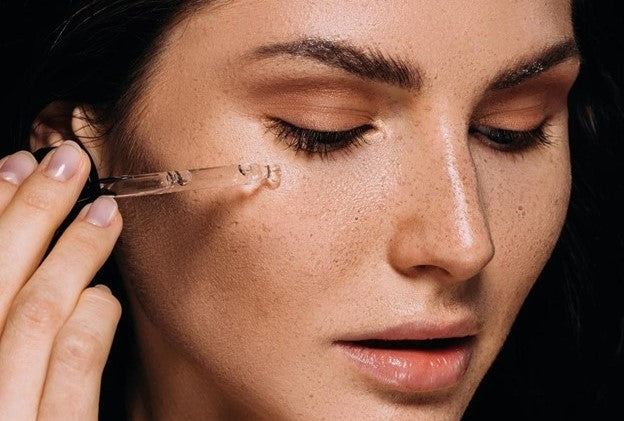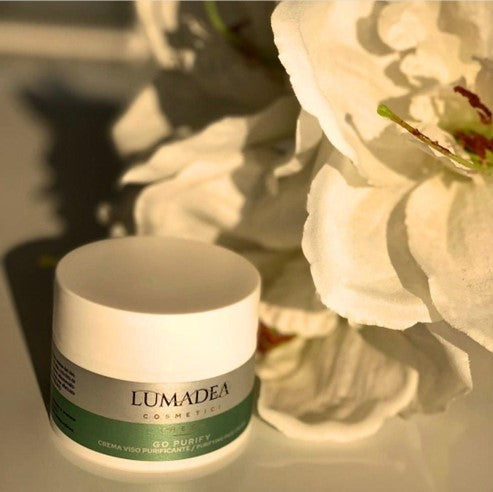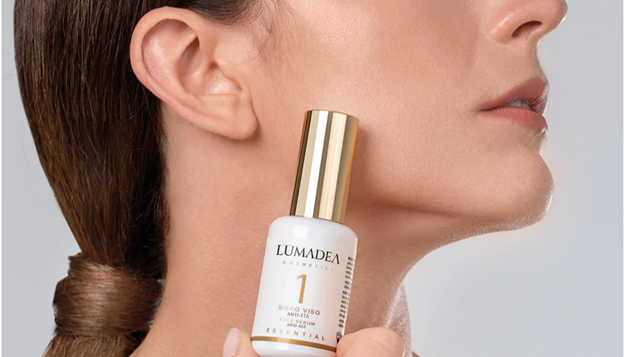
Snail Mucin and Hyaluronic Acid
Snail mucin and hyaluronic acid are two popular skin care ingredients that have been gaining popularity in recent years for their beneficial properties. While they offer different benefits for the skin, using these ingredients together can create a powerful combination for combating skin aging, improving hydration, and maintaining overall skin health.
In this post, we'll take a closer look at snail mucin and hyaluronic acid, what makes them unique, and how they can work together to create beautiful, healthier skin.
What is Snail Mucin?
Snail mucin is a relatively new ingredient to the beauty industry, but it has quickly become a popular skin care ingredient. Snail mucin is a somewhat thick, clear secretion that snails produce when they are stimulated, and as a way to repair their bodies and protect their skin from the environment. While it may sound unusual to use snail mucin in skincare products, there are several reasons why snail mucin is beneficial for skin.
Snail mucin is rich in several beneficial compounds including hyaluronic acid, glycolic acid, and allantoin. These compounds work together to provide a range of benefits for the skin, including:
- Moisturizing: Snail mucin is a natural moisturizer that can help to hydrate the skin and reduce dryness and flakiness.
- Anti-aging: Snail mucin contains antioxidants that can help to protect the skin from free radical damage, which can lead to premature aging.
- Brightening: Snail mucin contains glycolic acid which can help to improve skin tone and texture by removing dead skin cells.
- Acne-fighting: Snail mucin's allantoin content can help to reduce inflammation and redness, which can be helpful in treating acne.
Because of its numerous benefits, snail mucin is used in a range of skincare products, including moisturizers, serums, and sheet masks.
What is Hyaluronic Acid?

Hyaluronic acid is a naturally occurring substance in the body and is found in connective tissues as well as skin and joints. It is known for its ability to hold up to 1000 times its weight in water, making it an essential component of hydrated, plump skin.
As we age, our skin's ability to produce hyaluronic acid decreases, leading to dryness, fine lines, and wrinkles. That's why hyaluronic acid has become a popular ingredient in skincare products as a way to replenish the skin's moisture content and plump up fine lines and wrinkles.
In addition to hydration, hyaluronic acid has several other benefits for the skin, including:
Anti-aging: Hyaluronic acid's ability to hydrate the skin can help to reduce the appearance of fine lines and wrinkles, giving the skin a more youthful look.
Antioxidant: Hyaluronic acid has antioxidant properties which can help to protect the skin from environmental stressors that cause premature aging.
Healing: Hyaluronic acid can help to heal the skin by reducing inflammation and promoting cell regeneration.
Gentle: Hyaluronic acid is gentle and compatible with all skin types, making it a safe choice for those with sensitive skin.

Forms of Hyaluronic Acid
- Sodium Hyaluronate: Sodium hyaluronate is the sodium salt form of hyaluronic acid. It is a more stable and easily absorbed form of hyaluronic acid, making it commonly used in skincare products. Sodium hyaluronate has a lower molecular weight, allowing it to penetrate the skin and provide deep hydration.
- Hyaluronic Acid Gel: Hyaluronic acid gel is a viscous gel-like form of hyaluronic acid. It is commonly used in dermal fillers and injectables to add volume to specific areas of the face, such as the lips or cheeks. The gel is injected beneath the skin to plump up the area and reduce the appearance of wrinkles or sagging.
- Hyaluronic Acid Serums: Hyaluronic acid serums are lightweight and highly concentrated formulations that contain hyaluronic acid. These serums are designed to be applied topically to the skin and are readily absorbed, providing intense hydration and moisture retention. Hyaluronic acid serums are popular for their ability to boost skin hydration and improve the overall appearance of the skin.
- Hyaluronic Acid Sheet Masks: Sheet masks soaked in hyaluronic acid solution are another form of hyaluronic acid in skincare. These masks are typically made of fabric or paper and are saturated with a solution containing hyaluronic acid and other beneficial ingredients. When applied to the face, the sheet mask allows the hyaluronic acid to penetrate the skin and deliver hydration and nourishment.
- Hyaluronic Acid Creams and Lotions: Hyaluronic acid is also incorporated into creams and lotions for daily skincare routines. These products are designed to be applied to the skin to provide hydration and moisture throughout the day. Hyaluronic acid creams and lotions are often formulated with other beneficial ingredients to enhance the overall effectiveness and benefits for the skin.

Liposomal Hyaluronic Acid
Liposomal hyaluronic acid is a specialized form of hyaluronic acid that is encapsulated within liposomes. Liposomes are tiny spherical vesicles composed of a lipid bilayer similar to cell membranes. They can encapsulate and deliver active ingredients, such as hyaluronic acid, to the deeper layers of the skin.
The liposomal delivery system enhances the penetration and absorption of hyaluronic acid, allowing it to reach the target areas more effectively. Here are a few key points to understand about liposomal hyaluronic acid:
- Enhanced Penetration: Liposomes act as carriers for hyaluronic acid, facilitating its penetration through the skin barrier. The liposomal structure helps to protect the hyaluronic acid from degradation and increase its stability during application.
- Deep Hydration: Liposomal hyaluronic acid has the ability to deeply hydrate the skin by binding and retaining water molecules. It can help improve skin moisture levels, reduce dryness, and enhance the skin's overall hydration and elasticity.
- Anti-Aging Effects: The use of liposomal hyaluronic acid in skincare products can help diminish the appearance of fine lines, wrinkles, and sagging skin. By providing intense hydration, it plumps up the skin, resulting in a smoother and more youthful complexion.
- Improved Absorption: Liposomal encapsulation enhances the absorption of hyaluronic acid into the skin compared to traditional hyaluronic acid formulations. This allows for better bioavailability and efficacy of the active ingredient.
- Synergistic Benefits: Liposomal hyaluronic acid can be combined with other beneficial ingredients in skincare formulations to provide additional benefits. For example, it may be incorporated into serums, creams, or masks along with antioxidants, vitamins, or peptides to enhance the overall skincare effects.

Cross-Linked Hyaluronic Acid
Cross-linked hyaluronic acid (HA) is a modified form of hyaluronic acid that has been chemically altered to create a more durable and longer-lasting product. This modification is achieved by cross-linking the hyaluronic acid molecules using a variety of methods, such as the addition of chemical agents or through the use of different technologies.
Here are a few key points to understand about cross-linked hyaluronic acid:
- Increased Stability: Cross-linking enhances the stability and longevity of hyaluronic acid in the body. It slows down the natural enzymatic degradation process, allowing the product to remain in the skin for a longer duration.
- Prolonged Effects: Cross-linked hyaluronic acid products are designed to provide longer-lasting effects compared to non-cross-linked hyaluronic acid formulations. They can help maintain volume and hydration in the skin for an extended period, reducing the need for frequent re-treatments.
- Customizable Formulations: Cross-linking can be adjusted to create different densities and consistencies of hyaluronic acid products. This allows for customization based on the specific treatment area and desired outcome, such as fine lines, deep wrinkles, or lip augmentation.
- Safety Considerations: Cross-linked hyaluronic acid is generally considered safe for use in cosmetic procedures. However, as with any medical or aesthetic treatment, it's important to consult with a qualified healthcare professional who has experience with these products to ensure safe and appropriate use.
- Reversible and Non-reversible Formulations: Cross-linked hyaluronic acid can be further classified into reversible and non-reversible formulations. Reversible cross-linking allows for the potential reversal or correction of the treatment if needed, while non-reversible cross-linking provides longer-lasting results but is not reversible.
How Snail Mucin and Hyaluronic Acid Work Together
While snail mucin and hyaluronic acid offer different benefits for the skin, they work together to provide a powerful combination of hydration, anti-aging, and overall skin health. Snail Mucin actually contains its own hyaulronic acid, too. Here are some of the benefits of using snail mucin and various types of hyaluronic acid together:
- Improved Hydration: Both snail mucin and hyaluronic acid are known for their hydrating properties. When combined, they provide a boost of moisture to the skin that can help to reduce dryness, flakes, and fine lines. Snail mucin's ability to keep the skin hydrated, coupled with hyaluronic acid's ability to hold moisture in the skin, creates a powerful combo that can help to keep the skin plump, hydrated, and healthy.
-
Anti-aging Effects: Both snail mucin and hyaluronic acid offer anti-aging benefits for the skin. Snail mucin's antioxidant content can help to protect the skin from free radical damage that leads to premature aging, while hyaluronic acid's ability to hydrate the skin can reduce the appearance of fine lines and wrinkles.
Using snail mucin and hyaluronic acid together can enhance these anti-aging effects, creating a synergistic effect that helps to prevent and reduce the signs of aging on the skin.
- Soothing and Calming: Snail mucin's allantoin content can help to reduce inflammation and redness, which can be helpful for those with sensitive or acne-prone skin. Hyaluronic acid is gentle and works well with all skin types, making this combination a great choice for those with sensitive or reactive skin.
- Improved Skin Texture: Snail mucin contains glycolic acid which can help to improve skin tone and texture by removing dead skin cells. This can help to reduce the appearance of dull, uneven skin and promote a smoother, more even complexion.
When combined with hyaluronic acid, which plumps the skin and provides intense hydration, the skin can be left looking and feeling smoother, softer, and with an improved overall texture.
Lumadea Snail Mucin Products and Hyaluronic Acid
Lumadea greatly enhances the snail mucin experience by adding many forms of hyaluronic acid to our skincare formulations. Our 2 Eye and Lip Contour Serum contains Liposomal Hyaluronic Acid, which helps the serum achieve its maximum hydrating potential! Your eyes and lips are very sensitive areas, so extra attention in the form of Liposomal HA is very necessary for treatment and reinforcement. 3 Anti Age Face Cream also contains liposomal Hyaluronic acid, and so does our 0 Face Drops ( which also boasts cross-linked hyaluronic acid and hyaluronic acid in different molecular weights). These three products, of course, complete our Anti-Age Beauty Routine which can be purchased as a package for your skin’s full revival!

What it All Means for Your Skincare Routine
Using snail mucin and hyaluronic acid together can offer a range of benefits for the skin, including improved hydration, anti-aging effects, soothing and calming, and improved skin texture. While each ingredient offers unique benefits, when used together, they create a powerful combination that can support overall skin health and contribute to a healthy, glowing complexion. Lumadea Cosmetics has taken full advantage of this harmonious marriage of skin care ingredients by offering high-quality skin care options for all ages and skin types.
When shopping for skincare products that contain these ingredients, look for products that contain high concentrations of snail mucin and hyaluronic acid, and that are free of harsh or irritating ingredients. With consistent use, Lumadea snail mucin cosmetics that contain hyaluronic acid can help you achieve beautiful, hydrated, and healthy-looking skin.
If you like this post and want to learn more about how snail mucin cosmetics can fit into your skincare routine, check out our guide on how to use Lumadea snail mucin products with retinol.
As always, be sure to consult your healthcare professionals regarding any personal skin questions related to using new products.


